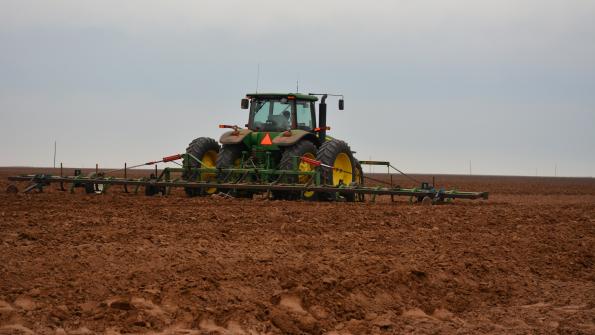November 29, 2016

The U.S. Department of Agriculture’s (USDA) Risk Management Agency (RMA) has announced changes to prevented planting coverage that will strengthen the integrity of the federal crop insurance program. The updates were made to address the recommendations of a 2013 USDA Office of Inspector General (OIG) report, and are supported by the data from a subsequent third-party study commissioned at the urging of the OIG. These improvements will ensure that the program continues to provide a strong safety net for producers.
Prevented planting coverage provides producers protection if they are unable to plant an insured crop by the final planting date. When adverse weather prevents planting, a prevented planting payment is made to compensate for the producer’s pre-planting costs generally incurred in preparation for planting the crop. These costs can include purchase of machinery, land rent, fertilizer, actions taken to ready the field, pesticide, labor, and repairs. The prevented planting factor is a percentage of the individual insurance guarantee and varies by crop, based on an estimate of pre-planting costs.
These updates were required to address the recommendations in OIG’s 2013 report: RMA Controls Over Prevented Planting. The OIG recommended that the agency review the prevented planting factors and make changes if necessary. RMA commissioned a third-party evaluation of prevented planting coverage, which provided recommendations for determining prevented planting factors. The evaluation was available for public comment from Jan. 30, 2015, to April 15, 2015. RMA evaluated the public comments and determined that adjustments to the evaluation’s recommendations were necessary.
CROPS REVIEWED
RMA reviewed prevented planting factors for barley, corn, cotton, grain sorghum, rice, soybeans and wheat for 2017 as part of an effort to ensure that prevented planting factors most accurately reflect the pre-planting input costs of producers. Today’s rulemaking will improve RMA’s ability to manage the prevented planting factors moving forward. While the prevented planting factors will be reviewed and updated for all crops with prevented planting coverage, these first seven crops are being updated for the 2017 spring planting season. Over time, the prevented planting factors may go up or down depending upon changes in input costs. RMA will evaluate the effectiveness of the recent changes and modify them as needed in coming years. Below is a table that lists updated prevented planting factors.
Today’s changes build upon recent improvements that protect the integrity of the federal crop insurance program. Due to an improved sampling methodology and other efforts, the crop insurance improper payment rate for 2015 was half that of the government-wide improper payment rate average. The program’s longstanding loss history demonstrates that rates are actuarially accurate. RMA continues to utilize technology and data mining to ensure that the crop insurance program is well-managed and free of fraud, waste, and abuse.
Prevented Planting Coverage Factors Crop | Current | Recommendation from Evaluation | Final |
Corn | 60% | 50% | 55% |
Soybeans | 60% | 60% | 60% |
Wheat | 60% | 60% | 60% |
Cotton | 50% | 35% | 50% |
Grain Sorghum | 60% | 60% | 60% |
Barley | 60% | 60% | 60% |
Rice | 45% | 45% | 55% |
About the Author(s)
You May Also Like




